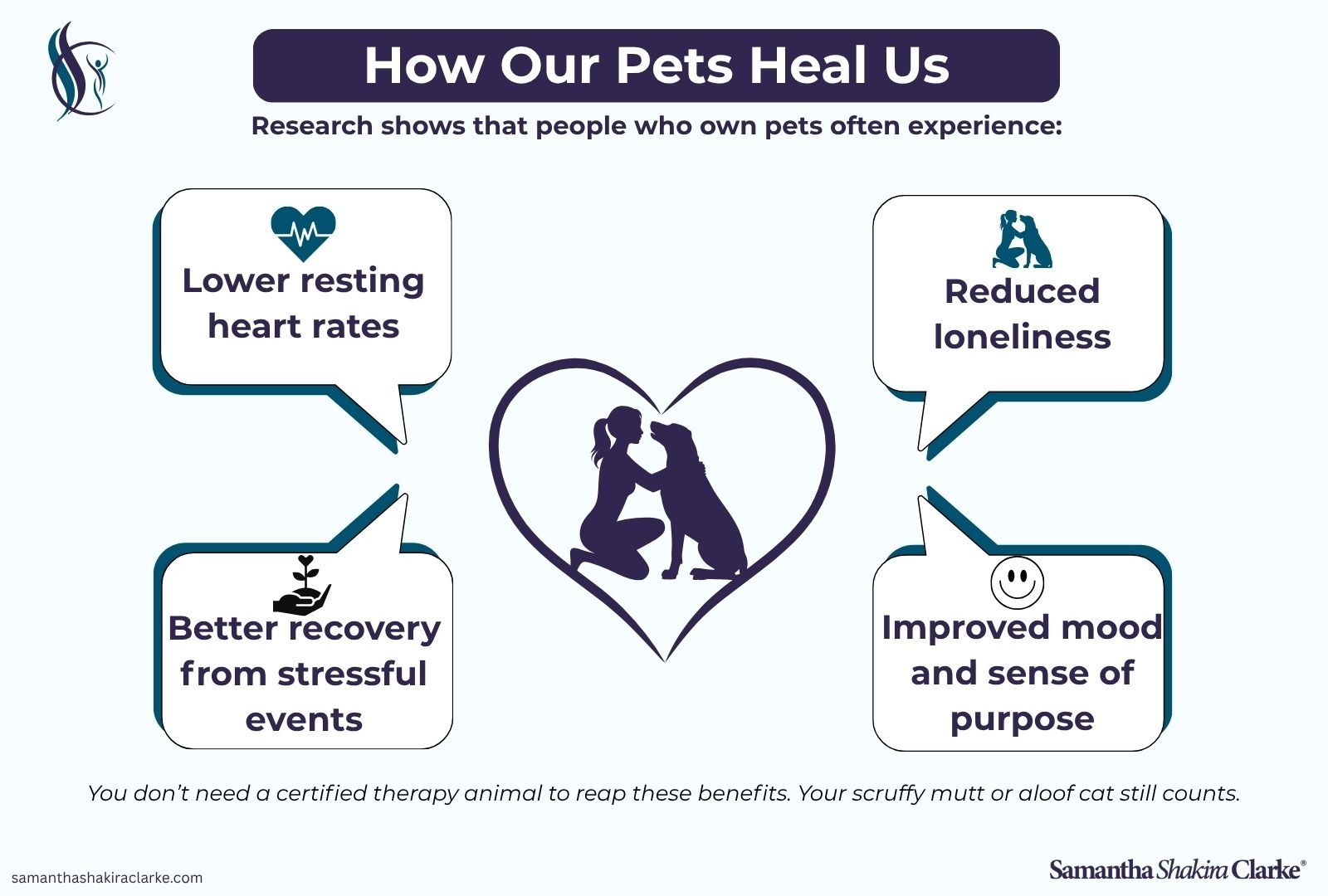 Book Now!
Book Now!We say it all the time: “My dog calms me down,” or “My cat knows when I’m stressed.” But is that true, or just something pet lovers tell themselves? Can our animals really destress us, or is it just wishful thinking?
The answer is both simple and stunning: yes, our animals are medicine, and the science proves it.
Studies consistently show that petting an animal lowers cortisol, the stress hormone, while boosting oxytocin, the same hormone that bonds parents and babies. One famous study found that people’s heart rates and blood pressure dropped within minutes of stroking a dog. Even watching fish in an aquarium can reduce muscle tension and lower anxiety levels.
This isn’t imagination. It’s biology. Animals pull us out of fight-or-flight and guide us back into the body’s rest-and-repair state.
The science of animal-assisted therapy is exploding. Hospitals use therapy dogs to calm children before surgery. Cats and rabbits are brought into care homes to reduce agitation in people with dementia. Even alpacas and miniature horses are making the rounds, because contact with animals shifts brain chemistry in ways medication sometimes can’t.
In one study, college students who interacted with therapy dogs reported lower stress for weeks after the encounter. Not hours. Weeks.

The act of caring for an animal creates routine and structure, which anchors the nervous system. Walking the dog gets you moving. Feeding the cat pulls you out of your head. And the presence of another living creature offers something screens never can: non-verbal connection.
Here’s the wildest part: animals can literally co-regulate our nervous systems. When you cuddle your dog, your breathing slows, and theirs does too. Studies using heart-rate monitors have shown humans and their pets syncing physiologically during quiet time together. Your calm becomes their calm, and their calm becomes yours.
It’s important to say: not all animals reduce stress. Caring for a pet can also bring challenges, from training to vet bills to sleepless nights. Any puppy parent can confirm that stress is very much alive at 3 a.m. And in my own life, raising Scoot, my reactive rescue dog, has shown me the sharp edge of that truth. His bark at a skateboard, his meltdown at the sound of a garbage truck—those aren’t just inconvenient; they are nervous system storms.
At first, I saw his reactivity as a flaw to be fixed. But living with Scoot has also revealed something profound: animals mirror the sensitivities we too often ignore in ourselves. Loud noises, unpredictable movements, constant stimulation—these things spike his nervous system the same way traffic jams, pings on our phones, or a slammed door might spike ours. His stress is a reminder that hyperarousal is not just a “dog problem.” It is a nervous system problem shared across species.
And here’s the paradox: even when Scoot’s stress adds stress to my day, the bond between us still pulls me back into connection. In supporting him, I am also practicing regulation for myself. Calming him teaches me to calm my own body. Tuning in to his triggers sharpens my awareness of my own.
So while animals can soothe us, they can also challenge us, and that is part of the medicine too. They remind us that nervous systems are delicate, easily rattled by modern life, and always in need of care.
So can our animals really destress us? The science says yes. They lower cortisol, boost oxytocin, and regulate our nervous systems in real time. They are furry, feathered, or scaled stress buffers.
In a world that keeps pulling us into anxiety and overdrive, our pets remind us to pause, breathe, and feel connected.
So the next time your dog leans against you or your cat curls up in your lap, know this: it isn’t just cute. It’s ancient, embodied medicine. And you didn’t even need a prescription.